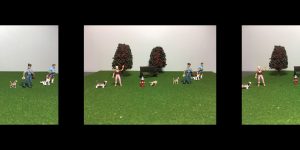Our first assignment in my Visual Arts class was to create a piece of concept art using the medium of photography and a formula: take a picture every for X number of days.
I've always been fairly obtuse when it comes to art. I stare at a painting and get bogged down in the "what does it mean" of it all. But a formula I could understand.
I wanted a way to connect this project to my area of study, psychology. I remembered from my PSYC 101 class we'd covered a unit on memory. Memory, it turns out, is reconstructive rather than reproductive, meaning that when we recall something, it's highly susceptible to change. Small variables, like the language used to evoke a memory, can alter what we remember.
Since our memories are not perfect, what are the possible implications? Are eye-witness testimonies reliable? Can we trust a statement made a year after an event has occurred? What are the odds the correct suspect is picked out of a lineup?
In order to demonstrate this phenomenon I took advantage of the medium we were given. I took a collection of model figures, trees, furniture, and landscape and created a scene. I took a photo and gave it to my roommate to study. For the next seven days I asked her to re-create the exact scene I'd shown her from memory and took a photo of each reproduction. Using Photoshop, I assembled the piece to show the transformation the scene underwent over the course of the week.

To see a more detailed version of my project you can click here.
This project opened my eyes to how art can be used as a method for research. I was so excited to apply what I'd learned from a discipline with a scientific approach to information to one based on creativity and critical thinking. This project bridged the gap of art and science for me, and inspired me to explore even more possibilities of integrating course material into my creativity.


This was the first work of art I've created that I felt had a meaning. I demonstrated a concept I'd learned in psychology using photography, bridging the gap between art and science, and opening the doors to even more methods of application and integration of course material.